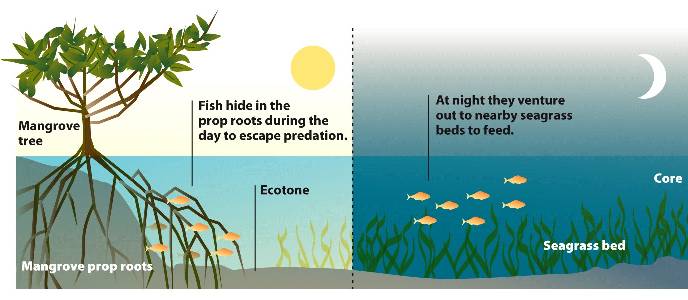


In human history, water has been the major attractor for human geographical location and distribution. It has the functions of intercepting pollutants carried by surface overflow, runoff, and underflow providing habitat for wild animals, and improving the ecological diversity of lakes. Lake–terrestrial ecotone is an important part of the lake ecosystem. It determines the management boundary of the lake–terrestrial ecotone, provides a theoretical basis for the construction of environmental protection projects, and is of great significance to the lake ecological restoration and management in watershed control planning. The distribution edge of wetland herbs is equivalent to the upper boundary of lake–terrestrial ecotone. Besides, compared with the lakes in the Middle-Lower Yangtze Plain, the high-density population distribution, high-intensive human activity invaded the plants' growth area, resulting in a smaller distribution width. SMO, pH, SSC, and soil nutrient content were all important environmental factors affecting the wetland herbs distribution width of the four lakes and the SMO was the most important factor. The MSWT was a feasible method to determine the width of lake –terrestrial ecotone. The principal component analysis (PCA) and the (redundancy analysis) RDA showed soil moisture content (SMO), pH, soil moisture content (SSC), and soil nutrient content had obvious correlation with distribution width. The detrended correspondence analysis (DCA) showed quantity of wetland herbs species, BK1 > YT1 = NT1 > NT2 > SC1 = SC2. The results of the MSWT showed the distribution width of wetland herbs in each lake–terrestrial ecotone with the natural-wetland type sampling line of Baksum Lake, Yamdroktso, Namtso, Siling Co was 51 m, 56 m, 33 ~ 53 m, 19 ~ 31 m. We took Baksum Lake, Yamdroktso, Namtso, Siling Co as examples, based on the spatial structure of the lake–terrestrial ecotone, used the moving split-window technology (MSWT) delimited the width of wetland herbs. Wetland herbs are characteristic plants of the lake–terrestrial ecotone, and their distribution width can be used to reflect the upper boundary of the lake–terrestrial ecotone. However, the ecological characteristics of lake–terrestrial ecotone made it difficult to delimit. For the ecological protection and maintenance of the lakeside zone, defining the upper boundary of the lake–terrestrial ecotone is a key issue that needs to be solved urgently. Lake is a critical part of Tibet's hydrological cycle, the lake–terrestrial ecotone is the most sensitive area in the water and terrestrial ecosystem.


 0 kommentar(er)
0 kommentar(er)
